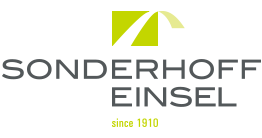Changes to Japanese Trademark Law – April 2015
From April 2015, in addition to the conventional word mark and figure mark etc. new types of trademarks such as motion mark, hologram mark, position mark, color mark or sound mark may be registered as a trademark in Japan.
A. Motion Mark
A Motion Mark is a mark whose visually perceptible figure changes with time (such as a moving figure indicated on a screen when booting a computer).
It must be specified how the mark moves. Therefore, either the trajectory in a specimen of the mark is indicated with the following drawing,

or a number of specimens of marks shown below is submitted indicating the changes over time:

No distinctiveness can be ascribed to the movement of the figure itself. Therefore, if an examined mark comprises a simple figure with no inherent distinctiveness, then, whatever its movement, no distinctiveness can ascribed to it as a whole.
In addition, because the manner of movement itself is not subject to protection, even if an earlier filed mark moves in the same way and if the examined mark itself is originally dissimilar, then the examined mark would as a whole not be regarded as similar.
If the movement of an examined mark leaves a trace indicating a trajectory and if an earlier filed word mark is the same or similar to what is left as a trace by the examined mark, then the examined mark would be regarded as similar.
B. Hologram Mark
A Hologram Mark is a mark whose holographic image has a different appearance when viewed from different angles.
A number of specimens of marks must be prepared and submitted depending on how the Hologram Mark is presented.

No distinctiveness can be ascribed as to the manner in which a 3-D figure itself is generated by holography. Distinctiveness of a Hologram Mark as a whole depends on the distinctiveness of indicated letters and figures. If an earlier mark is the same or similar to the figure of an examined Hologram Mark as seen from a certain angle, then the examined Hologram Mark as a whole would be regarded as similar.
C. Position Mark
A Position Mark is a mark specified by the position of the figure it comprises.
A dashed line must be shown to indicate the object to which the mark shall be attached. The shape indicated by the dashed line of the object does not affect the examination of the similarity of the Position Mark.

A figure lacking distinctiveness as such could still be registered by specifying its position. If the examined Position Mark itself has no distinctiveness, the Examiner would next consider its position on an object to which it shall be attached. On the other hand, if the mark itself has distinctiveness, its position will be irrelevant.
D. Color Mark
A Color Mark is a mark consisting of a single color or a contour-less combination of colors and is not combined with figures or letters.
Along with submitting a specimen, the color(s) must be specified in accordance with objective indicators such as RGB and Pantone etc., as in the next depiction.

For a combination of colors, in addition to indicating RGB values, the percentage of the figure’s area taken up by each color must be specified as shown below:

The color combination is 70% red and 30% blue.
Note that distinctiveness cannot be ascribed to the Color Mark as such. However, Secondary Meaning may facilitate the registration of the Color Mark, albeit with a high standard of proof.
The application for registration of a Color Mark may specify its position on an object. This may lower the standard of proof for the required Secondary Meaning of the Color Mark.

Because distinctiveness cannot be ascribed to a Color Mark as such, proof of secondary meaning must be provided in all cases.
E. Sound Mark
A Sound Mark is a mark consisting of music, a voice or a natural sound, etc.
The sound must be specified by staff notation or a description of the sound in words is required. If there are lyrics, they need to be incorporated into the staff notation. The sound must also be submitted separately as an MP3 file.

An example of describing the sound in words would be: “In this mark, two clapping sounds “clap, clap” are heard first followed by the cry of a cat “meow”. The mark lasts for a total of three (3) seconds”
No distinctiveness can be ascribed to:
− the sound the product would usually make (e.g. a bubbling sound for a designated product such as a fizzy drink)
− the sound the product makes according to its inherent function (such as a “peep, peep, peep” for an alarm clock)
− a natural sound such as blowing wind or what is recognized as music only.
Where the Sound Mark includes an articulated word, if an earlier word mark is the same or similar to the articulated word of the Sound Mark, the latter will be regarded as similar.


